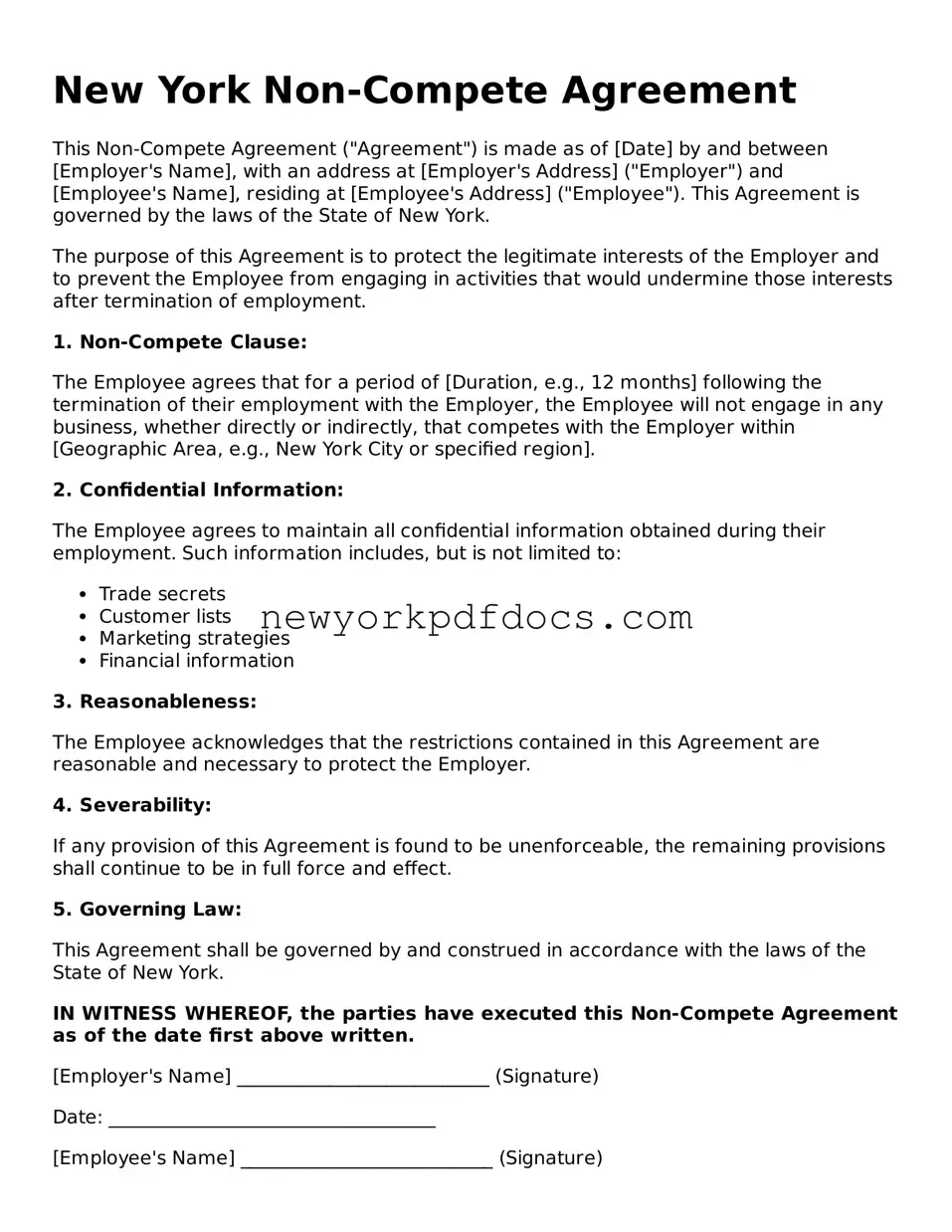New York Non-Compete Agreement
This Non-Compete Agreement ("Agreement") is made as of [Date] by and between [Employer's Name], with an address at [Employer's Address] ("Employer") and [Employee's Name], residing at [Employee's Address] ("Employee"). This Agreement is governed by the laws of the State of New York.
The purpose of this Agreement is to protect the legitimate interests of the Employer and to prevent the Employee from engaging in activities that would undermine those interests after termination of employment.
1. Non-Compete Clause:
The Employee agrees that for a period of [Duration, e.g., 12 months] following the termination of their employment with the Employer, the Employee will not engage in any business, whether directly or indirectly, that competes with the Employer within [Geographic Area, e.g., New York City or specified region].
2. Confidential Information:
The Employee agrees to maintain all confidential information obtained during their employment. Such information includes, but is not limited to:
- Trade secrets
- Customer lists
- Marketing strategies
- Financial information
3. Reasonableness:
The Employee acknowledges that the restrictions contained in this Agreement are reasonable and necessary to protect the Employer.
4. Severability:
If any provision of this Agreement is found to be unenforceable, the remaining provisions shall continue to be in full force and effect.
5. Governing Law:
This Agreement shall be governed by and construed in accordance with the laws of the State of New York.
IN WITNESS WHEREOF, the parties have executed this Non-Compete Agreement as of the date first above written.
[Employer's Name] ___________________________ (Signature)
Date: ___________________________________
[Employee's Name] ___________________________ (Signature)
Date: ___________________________________
